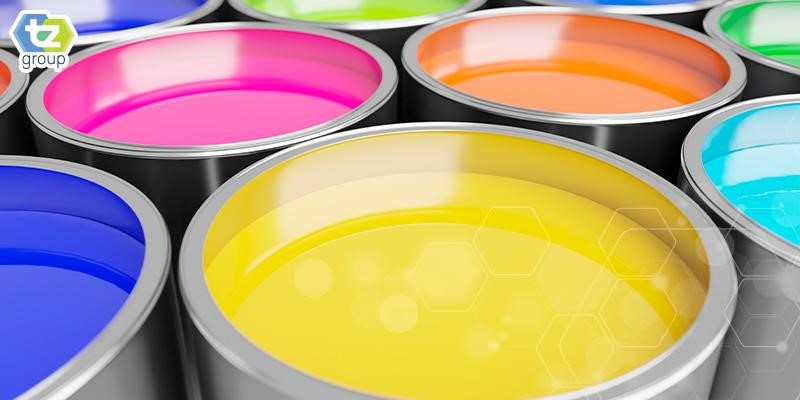Butyl acrylate is a key chemical compound widely used in various industries, from coatings and adhesives to textiles and packaging. This article provides an in-depth look into what butyl acrylate is, its production process, applications, storage, and important safety considerations. Understanding these aspects is crucial for making informed decisions and ensuring the safe and effective use of butyl acrylate in your operations.
What is Butyl Acrylate?
Butyl acrylate, or BA is an acrylate ester, more precisely an acrylate monomer, resulting from the formal condensation of the hydroxy group of butane-1-ol with the carboxy group of acrylic acid. It is a transparent, volatile liquid with a unique fruity, strong smell. BA is recognized for its outstanding performance attributes in different uses, thanks to its features like a low glass transition temperature of -45°C, providing flexibility, durability, and excellent low-temperature performance to polymers.
BA is slightly soluble in water, but highly soluble in organic solvents, such as ethers and alcohols. Its ability to copolymerize with other monomers makes it extremely versatile in creating various copolymer formulations.
Production
Butyl acrylate is mainly produced through the esterification of acrylic acid with butanol, utilizing an acid catalyst. The production process generally consists of two main stages: esterification and purification.
Esterification
Acrylic acid, excess butanol, and p-toluene sulfonic acid catalyst are introduced into the reaction system in this process. The reactor is connected to a distillation unit for continuous water removal, enhancing reaction kinetics and promoting ester formation. Organic compounds collected at the bottom are recycled back into the reactor, and water serves as a solvent for extracting the catalyst.
Purification
Recovered water is sent to a catalyst extraction column, separating the catalyst from the cooled reaction product, which is recycled back to the esterification reactor. The crude product is washed and neutralized, then distilled to recover butanol. The final step involves distilling the mixture to isolate high-purity butyl acrylate, with organic wastes decomposed to recover additional butyl acrylate.
Applications
Butyl acrylate has copolymerization properties, which means it has the ability to be thermoplastic or thermoset and elastic, and the ability to enhance the performance of products in different environments.
● Paints and Coatings
It’s widely used in the production of acrylic emulsions for paints and coatings. It offers excellent flexibility, weather resistance, and durability, which makes it highly suitable for architectural and automotive coatings. When combined with methyl methacrylate (MMA) and styrene, BA forms copolymers that are particularly favored for high-performance coatings.
● Adhesives and Sealants
Butyl acrylate enhances the adhesive strength and flexibility in various applications. Its low glass transition temperature is beneficial in pressure-sensitive adhesives, improving tackiness and adhesive properties. Additionally, it’s also used in caulks and sealants due to its exceptional sealing capabilities and resistance to environmental factors.
● Textiles, Paper, and Leather Finishes
It’s used to improve the feel, durability, and appearance of these materials. It enhances the flexibility and strength of the coatings applied to these substrates.
● Thermoplastic Ethylene Acrylate Copolymers (EBA)
These are employed as impact modifiers and processing aids in thermoplastics. These copolymers are used in packaging films, laminations, and hot melt adhesives.
How Butyl Acrylate Can Be Stored and Distributed?
Storage
Proper storage of BA is essential to maintain its quality. It should be kept in cool, dry, and well-ventilated areas, away from sunlight, heat, and flames. Typically, BA is stored in drummed containers like iso tanks made of aluminum, stainless steel, or carbon steel. To ensure optimal environmental conditions, it is important to avoid contact with oxidizing agents and to store it within recommended temperature limits to prevent polymerization.
Distribution
Butyl acrylate is commonly transported in large vessels or tank trucks. It’s categorized as a flammable liquid, needing the implementation of proper safety precautions during its transportation. It’s crucial to ensure that the packaging is both secure and in accordance with regulations to effectively prevent any leaks or contamination.
Things One Should Remember While Using Butyl Acrylate
BA can react violently with strong acids, bases, and oxidizers. It must be handled with care and avoid mixing with incompatible substances. Exposure to it can cause irritation to the eyes, skin, and respiratory system. Symptoms of exposure include nausea, coughing, and difficulty breathing. Immediate medical attention is required in case of severe exposure.
Safety Precautions
- Personal Protective Equipment (PPE): Handlers must wear gloves, goggles and protective clothing to avoid direct contact.
- Ventilation: To prevent inhalation of vapors, it should be handled in well-ventilated areas.
- Polymerization Inhibitors: Commercial preparations of BA often contain inhibitors to prevent premature polymerization. You must ensure these inhibitors are present and effective.
Partner with TZ Group for High-Quality Butyl Acrylate
BA is a versatile and essential chemical in various industries, from coatings and adhesives to textiles and packaging. Understanding its production, applications, and proper storage is crucial for safe and efficient use. By mastering these aspects, professionals can harness the full potential of butyl acrylate, ensuring high-quality outcomes in their projects.
For top-grade butyl acrylate and other industrial chemicals, TZ Group is your trusted partner. We offer exceptional quality, competitive pricing, and reliable delivery. Contact TZ Group today to discuss your needs and start developing your next project with the highest standards of safety and performance.


